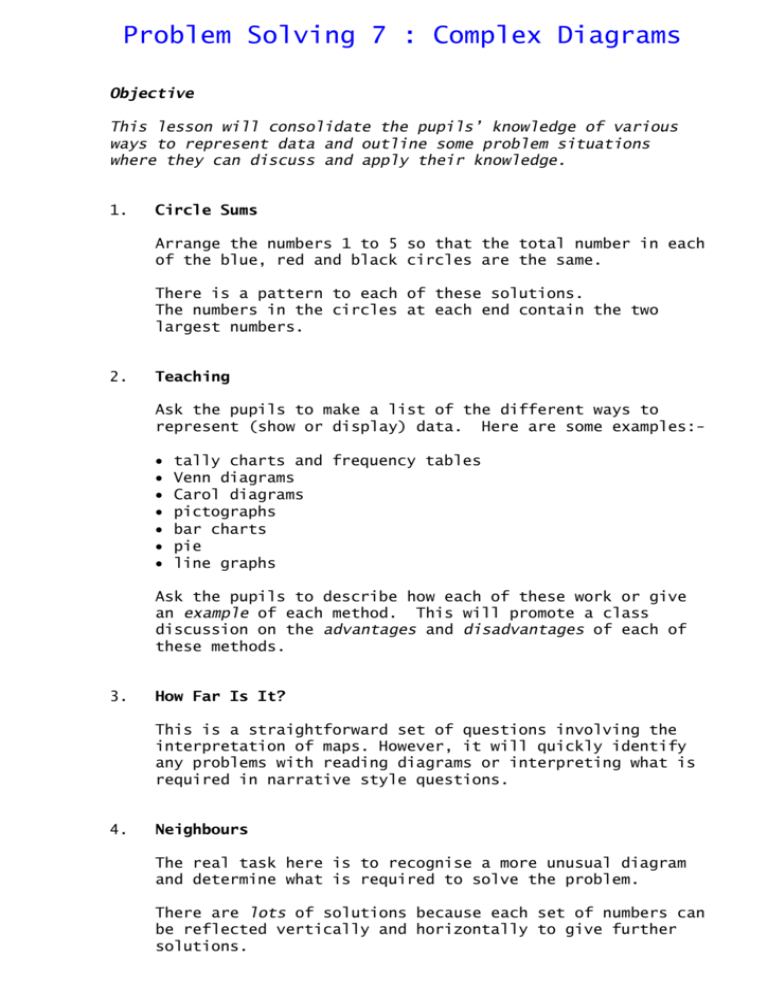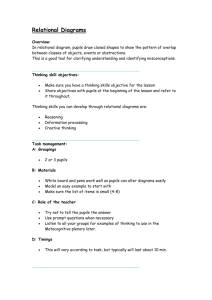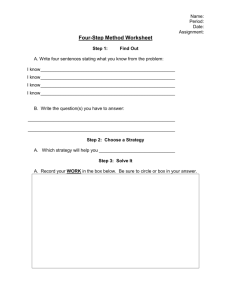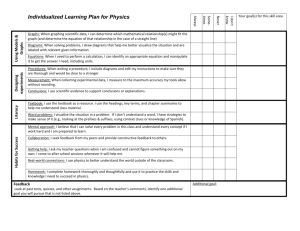Complex Diagrams (Problem Solving Seven)
advertisement

Problem Solving 7 : Complex Diagrams Objective This lesson will consolidate the pupils’ knowledge of various ways to represent data and outline some problem situations where they can discuss and apply their knowledge. 1. Circle Sums Arrange the numbers 1 to 5 so that the total number in each of the blue, red and black circles are the same. There is a pattern to each of these solutions. The numbers in the circles at each end contain the two largest numbers. 2. Teaching Ask the pupils to make a list of the different ways to represent (show or display) data. Here are some examples: tally charts and frequency tables Venn diagrams Carol diagrams pictographs bar charts pie line graphs Ask the pupils to describe how each of these work or give an example of each method. This will promote a class discussion on the advantages and disadvantages of each of these methods. 3. How Far Is It? This is a straightforward set of questions involving the interpretation of maps. However, it will quickly identify any problems with reading diagrams or interpreting what is required in narrative style questions. 4. Neighbours The real task here is to recognise a more unusual diagram and determine what is required to solve the problem. There are lots of solutions because each set of numbers can be reflected vertically and horizontally to give further solutions. 5. Rebecca’s Favourite School Day To find Rebecca’s favourite day, the pupils work through a set of clues which are used to eliminate days until the pupils reach the required day of Friday. Sam’s day may need some discussion about which days can be safely eliminated. 6. Plenary These diagrams were created using computer software. Only one of these diagrams is appropriate. Which three diagrams are not appropriate? Discuss why each of the three diagrams is unsuitable. chart 1 This is suitable to show the average amount of milk, but the units could be improved to read litres per day. chart 2 This is not appropriate because the width of the bottle is increased as well as the height. When the height is doubled, the volume of the bottle is increased by a scale factor of 2 x 2 x 2 = 8. This technique is often used to mislead people. Compare the size of D(8) and J(16) and you can see that bottle J looks much more than twice D. chart 3 This is a line graph which implies continuity of data with valid in-between values. It would be the correct diagram to use if both axes measured continuous variables such as time and temperature. But the breed of cow is not continuous. You cannot have a cow between Ayrshire and Dexter. chart 4 Pie charts are excellent for comparing the relative sizes of milk yield for each breed of cow but no information is given to indicate the quantity of milk produced. This question was taken from Year 9 SATs Paper 2 (2005) levels 5-7





